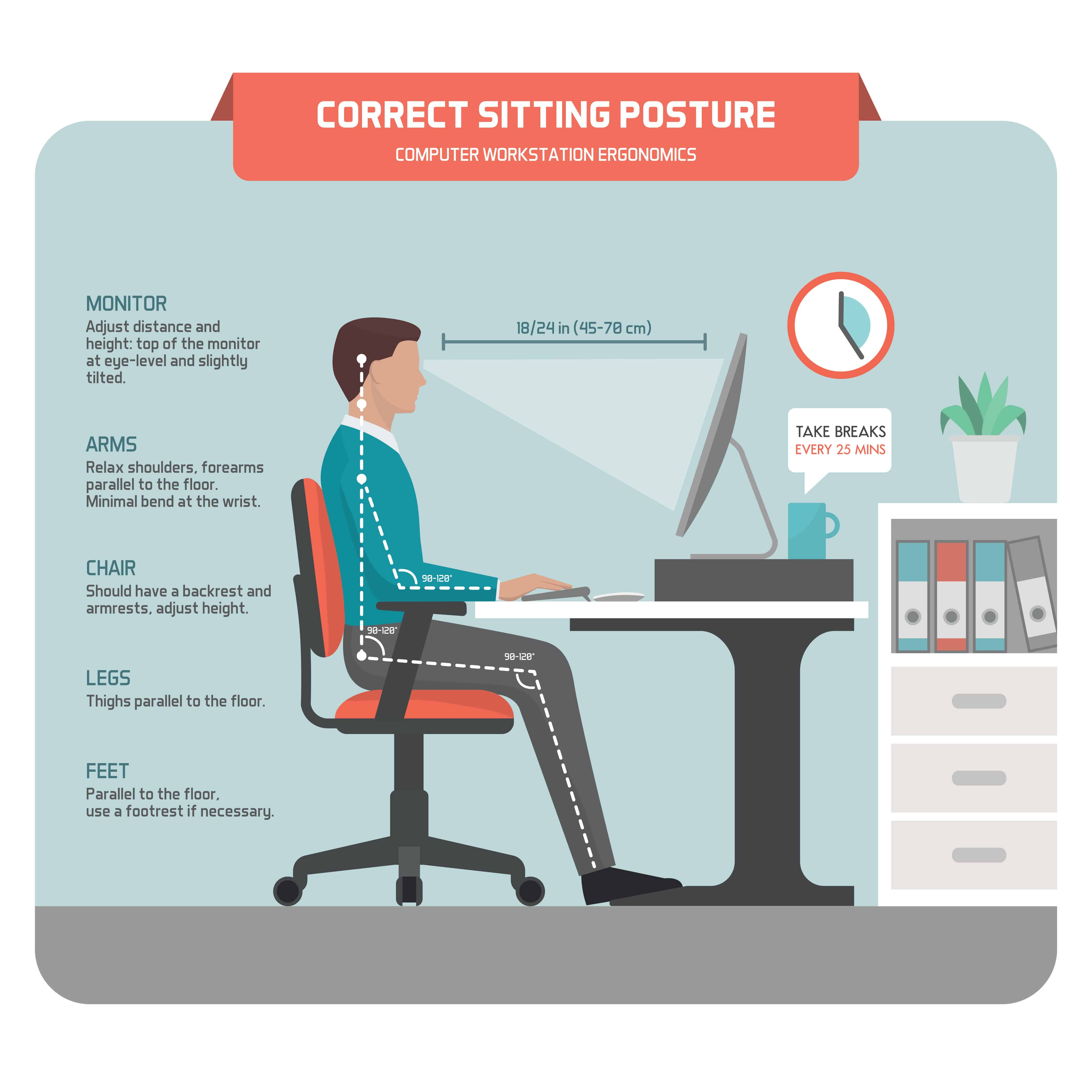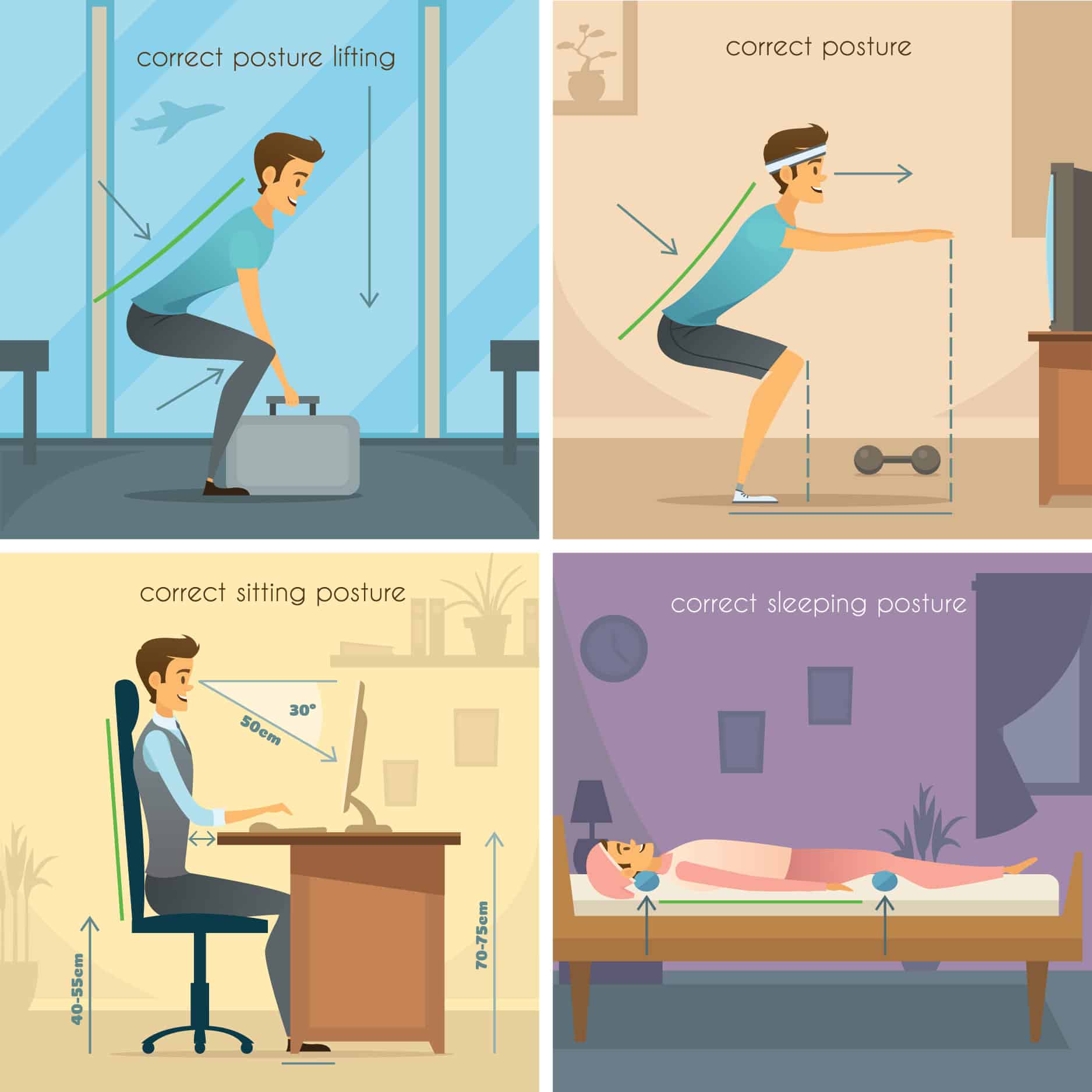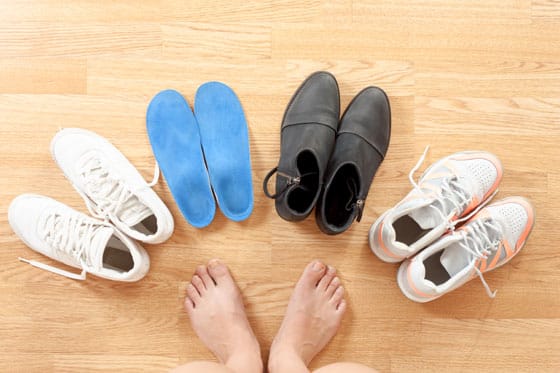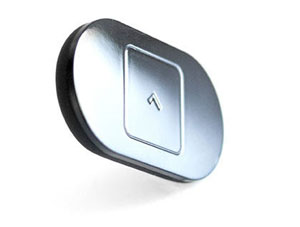
Proper Ergonomics at the Office
When you sit in your office chair, you should do your best to improve your daily habits, particularly if you are prone to experiencing back pains. The use of back support and regular back exercise can address any issues linked with discomfort on your upper and lower back. At first, you may find it somewhat uncomfortable when you change your habit. However, your new and improved way of sitting will feel more natural as you become accustomed to this habit.
As much as possible, never lean forward or slouch when you sit on your chair for long hours. Your back should be aligned with the back of the chair, and it is best to find a seat that is a custom fit to your body.
Each time you are seated, make sure your arms remain flexed at about a 90-degree angle at your elbows. If there is a need to adjust, then do so to avoid discomfort. Your knees should also be align with your hips, or a little bit higher when you sit on your chair.
Make it a point to rest both feet on the floor. For chairs that are too high, you may find it quite convenient to use a footrest where you can place your feet firmly on the floor. Moreover, keep your shoulders straight when seated to avoid slouching or slumping.
Most importantly, never sit on your chair for long periods. Even if your chair is comfortable or has proper ergonomics, you should find time to stand, walk around and stretch once in a while. This improves blood circulation and prevent cramps that are far too common among those who remain on their seats for hours.
Guide to Proper Posture When Standing
When you stand, your weight should be entirely on the balls of your feet instead of on the heels. Keep your feet a few inches apart, or at least shoulder-wide. Then, make sure your arms remain hanging comfortably on your sides.
Keep your body straight with your shoulders upright. If you wish, you may tuck your chin a bit to maintain the right level of your head. You should also never lock the knees to avoid any painful sensations when you remain in a standing position for hours.
If you need to stand for several hours, shift your weight from one foot to the next. You may also consider rocking your heels to your toes. Whenever possible, stand gently against a wall and let your shoulders touch the wall. As you remain in this position, you may also rest your head on the wall. In case you fail to do so, then your head is most probably too far forward.
Proper Walking Posture
Try to keep your head upright and be sure your eyes are looking just straight ahead in front of you. Never push your head forward and have your shoulders aligned perfectly with your body. Furthermore, be sure your shoulders remain straight, and lengthen your neck while keeping it upright.
Practical Tips on How to Lift or Carry Heavy Objects
If you need to lift something off the ground, be sure to bend gently at your knees instead of the waist. You should also use your abdominal muscles and leg when thrusting your body upwards instead of your lower back. Whenever necesary, you may use a supportive belt, which can help maintain proper posture as you life.
Each time you hold and carry a heavy item, make it a point to cradle it closer to your body. However, if the object is held with your arm, try to switch carrying it from one arm to another. If you have a dense item in your backpack never lead forward or round your shoulders. You may want to use a stroller or backpack with wheels if you think the load is more than what you can carry properly.
Exercises to Keep Your Back Straight
It takes practice to maintain a straight back when you sit, stand or walk. Some exercises can also help you keep your back straight including the following:
Wall Presses
An excellent way to strengthen your abdominals and spine is the wall press. It is also great for correcting your posture, so you should perform this exercise at least every half an hour. Simply stand straight while allowing your back to touch the wall. In addition, you should keep your shoulders, calves and buttocks on the wall, as well. Gently push your hands and body against the wall, and take about 5 breaths as you do so.
Squats
With strong core muscles comes proper posture. So, to enhance your posture, moblity and balance, consider performing deep squats. Begin by standing straight with your feet slightly apart, and make sure your toes are poiting forward. Then, slowly raise both arms over your head and gently bend forward as you place the palms of your hands on the floor.
Next, lower your buttocks for a deep squat, but be sure to continue lengthening your spine. Hold this pose for 3 to 5 breaths. Push down using your hands to allow your abdominals to keep your body in an upright position. End by pushing your body up with your arms raised over your head, and avoid bending forward.
Bottom Line
In most cases, poor posture is caused by having tensed muscles as this condition results to a misaligned body. Fortunately, you can perform a number of exercises that will give your body a good stretch while relaxing your back muscles. Additionally, you may gain benefits from yoga, meditation, and other practices that help relax your muscles. Tai chi, massage therapy and other exercises can also do wonders to your back muscles while enhancing your posture.
If you think you need further professional support, you may consult a chiropractor for advice on how to achieve a straight back. This health expert can also provide you with a customized plan that will benefit your posture and overall health on a long-term basis.












